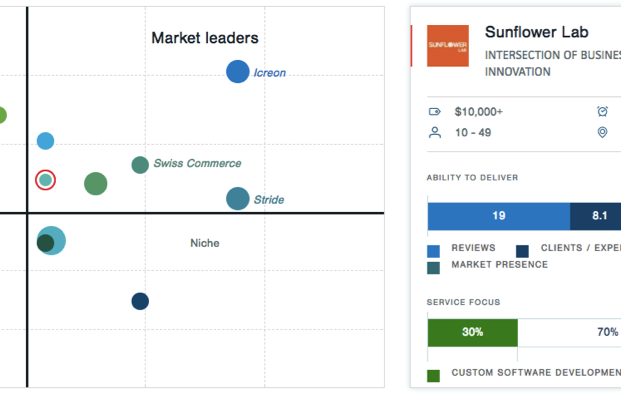A Healthcare Product Development Guide
When we started designing and developing a new digital experience, we knew we had a lot of challenges in front of us. Through the complexity of a healthcare environment, we were able to develop several new digital products (Mobile and Custom ERP) that simplified the way surgeries were scheduled within hospitals. We also streamlined customer billing, which was the biggest pain point for a lot of their customers.
As we, A Custom software development company build digital solutions for our clients in the healthcare sector, we thought of sharing our engineering and product design best practices.
There are four core differentiators when building digital experiences for healthcare:
1. Strong project management and controls (focus on details, control scope, know the rules).
2. Mission-critical engineering (engineering must be solid; failures can be catastrophic).
3. Human-centered design is even more important (product must be intuitive and convenient).
4. HIPAA regulations (secure products and adhere to regulations. Must know what you’re doing).
STRONG PROJECT MANAGEMENT AND CONTROLS
In healthcare, you don’t get many opportunities to mess up. In some cases, you make one wrong decision and human lives can be at stake.
So, when we engage with healthcare projects, we keep our core project management principles close to us. These principles dictate the engineering, design, and QA processes we follow.
Here are five principles we believe need to be adhered to for any healthcare digital project:
1. First, a detailed project plan that includes a project summary and, most importantly, WHY we are doing this project?
2. A phased product road map with clear project milestones. What are we getting and when are we getting it? This schedule dictates to the business when they can be expecting to use the new technology.
3. A project control plan including a breakdown of activities, responsibilities, and their allocation; methods/ways to control such activities; budgeting/resource allocation plans along with their schedules, controls, and time of execution.
4. A project milestone review plan so completed activities can be reviewed to track the status of the project and make changes if, and wherever, necessary to complete the projects on time and within the allocated budget.
5. There also needs to be a product control plan along with an ops and maintenance plan. This allows major activities ranging from product configuration to identification, and from traceability to defining the deliverables to be controlled and executed on time with the least number of deviations in the plan.
MISSION CRITICAL ENGINEERING AND QA PRINCIPLES
In healthcare, oftentimes, QA can be equally—if not more—important to the development of the app.
We have three core critical engineering principles for healthcare projects:
1. Always start with clarity. Any assumption engineers make must be validated. It’s very important to have clarity when it comes to discovery and planning as well as designing the software. Documentation is important, but clean code that does exactly what you want it to do, and no more, is what’s needed.
2. High testability is another important principle. Any application you can test and verify easily will prove to be more trustworthy long-term.
3. Automate testing as much as possible (but, test every edge case with humans). We stress early on in our healthcare projects that we’re going to spend a lot of time doing QA, and this is not something for us to take lightly. We automate testing whenever possible to save everyone time and add confidence that what we built is strong.
HUMAN-CENTERED DESIGN—BUILD FOR THE PEOPLE, SOLVE THE RIGHT PROBLEMS
A human-centered design approach is focused on solving the right problems for the right people. That’s it. We’re huge fans of human-centered design, and during healthcare projects it enables us to move quickly and helps us create a digital solution that solves business problems.
Here are three principles we rely on:
1. Have true empathy for the end-user. When we develop software used by practitioners in hospitals, we have to consider the context of how they’re using the system. Are they sitting down? Are they on the go? Is this done in a batch or one at a time when they have the opportunity?
Empathy and understanding how people use your product is always important, but in healthcare it’s 10x more important.
2. Focus on real, confirmed problems. It’s easy to think you know what the real problems are, but you can’t design for it until you live it. We have a strong process in which we cannot move ahead until we are 100% confident we’re designing for the problem.
The problem can change the application completely. A mobile app can turn into a chatbot or even something as simple as interactive text messages. Understand the core problem you are solving and don’t move on until you are confident it’s a real problem that you can begin solving for.
3. Understand the impact of what you’re building (by understanding the entire picture). We’ve seen simple feature requests get executed perfectly, but in the context of the entire system, it was definitely wrong and could have caused future disasters.
For example, when we designed the scheduling system we had to understand the process of how a surgery gets scheduled from start to finish. After diving in, we uncovered many dependencies that changed when and how a surgery gets scheduled.
In the end, there are humans using this product so our technology has to adapt to every core and edge use case or we risk deeming the software invalid. Expose your developers to the systems and not just the features they need to build.
LAST BUT NOT LEAST, DON’T FORGET ABOUT HIPAA REGULATIONS
The Health Insurance Portability and Accountability Act (HIPAA) sets the standards for the protection of sensitive data/health information of the patients. Companies working in the healthcare sector are liable and accountable to take network, physical, and process security measures in order to protect their patients’ information from leaking out.
When we develop software for healthcare we follow these basic tenants of HIPAA to be compliant:
1. Backups – The data, or electronic protected health information (ePHI), can be backed up whenever the need arises.
2. Encryption – All the ePHI data must be completely encrypted before it is transmitted further. Moreover, such data should be encrypted even when it is stored.
3. Authorization – All ePHI data should be accessed only by the authorized staff or appropriate authorities.
4. Integrity – No unsanctioned changes should be allowed in this stored data.
5. Disposal – If the ePHI data is not needed anymore, its disposal should be done safely and permanently in a manner where it is not accessible again by anyone.
6. Agreement – The ePHI data should either be hosted on the servers of a company with whom a Business Associate Agreement is signed or on secure in-house servers.
Protecting patients’ data is a big priority, so you need to run a tight project ship, with regular audits, to make sure you’re building the right solution.
BUILDING DIGITAL EXPERIENCES IN HEALTHCARE IS DEMANDING, BUT REWARDING
For the last 10 years, we’ve been helping companies solve business problems with technology. If it makes an impact, we want to be part of it. That’s a big reason why we have an altruistic perspective on healthcare projects. We know they’re demanding, but I have to say, we find them extremely rewarding.
To know more about our achievements in detail, please click here or contact us
Related Posts
Nothing found.
Let’s talk!
We’d love to hear what you are working on. Drop us a note here andwe’ll get back to you within 24 hours
You might also like
Stay ahead in tech with Sunflower Lab’s curated blogs, sorted by technology type. From AI to Digital Products, explore cutting-edge developments in our insightful, categorized collection. Dive in and stay informed about the ever-evolving digital landscape with Sunflower Lab.






